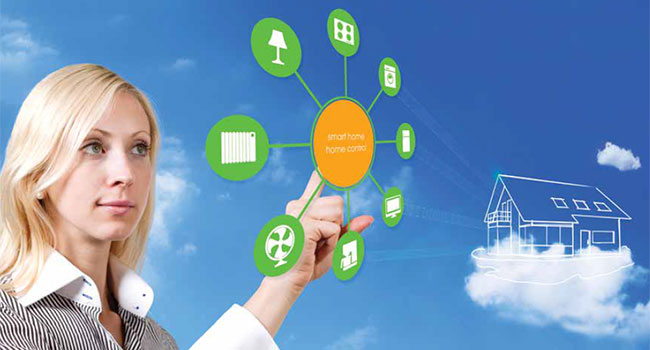
Smart Business
More than half the population is excited for home technology
I want a smart home, but where do I start?
As a security dealer, you might be starting to find this question
popping up in multiple customer conversations. As more people
learn about smart homes, those in the industry will get this question
more often.
According to Icontrol Networks’ 2015 State of the Smart Home Report,
over half of the population is excited about smart home technology, with
millennials (79 percent) and parents (76 percent) leading the pack. Similarly,
half of respondents said they plan to purchase at least one smart home
product in the next year.
So, where do security dealers fit in? Security is still number one in driving
mass-market adoption, with nine out of 10 consumers noting security
remains one of the top reasons to purchase and use a smart home system.
What you’ll find most exciting is nearly seven out of ten (69 percent) said
they would be hesitant to purchase a smart home system that didn’t include
security and 35 percent said they absolutely wouldn’t consider it. One respondent
in the survey said it best in an open-ended response saying: “security is
what makes a smart home a smart home,” and we couldn’t agree more.
What’s more is that a security company ranked number one (21 percent)
in consumer preferences for purchasing a smart home device. The opportunity
is right in front of you, so take it and position yourself as an early adopter
of smart home security and automation. With 52 percent of respondents saying
they would like someone to do all of the installation and setup for them,
the opportunities are endless and security dealers are well positioned to benefit
from this phenomenon.
Dealers have the opportunity be the focus point of their customer’s home.
Homeowners will start to connect more than just security to their system,
making them more inclined to remain a loyal customer. A smart home enables
home owners to connect their lighting, appliances, security and heat, among
other things, and control them from a device, or multiple devices. Home automation
can encompass a variety of features, depending on the homeowner’s
needs and preferences.
The smart home continues to
evolve, but is on the path to make
consumers’ lives easier so that they
can focus on other things, like enjoying
time with family and friends
or focusing on their professional
life. For example, you can set your
heating system to change to a certain
temperature daily, like when everyone
leaves your home to save on
energy costs, and can automate your
lights to make it look like someone is
home while your family is away.
Having a smart home will not
only benefit the customer, but also
you as a security dealer. According
to a recent survey by Parks Associates,
70 percent of security dealers
currently install or plan to install
interactive smart home devices or
systems. The survey also found that
nearly 40 percent of installs from
2015 had both system interactivity
and enhanced smart home features,
an increase from 31 percent in 2014.
Additionally, dealers can increase
monthly revenues by an average of
$14 per subscriber, per month, by
adding interactive services.
A great example of this is ADT,
who recently reported that 21 percent
of its customer base now has
some Pulse feature.
When it comes to traditional
home security, people want all the
bells and whistles. And by offering
interactive/HD video that can be
monitored from a phone, laptop, or
tablet, it can only be seen as a valueadd
to customers. The smart home
enables you to offer your customers
a feeling of ease and relaxation,
knowing that they can see their
home from anywhere, anytime.
Peace of mind is not the only
thing that home automation offers.
According to Icontrol’s report, 70
percent said they are excited about
the potential cost savings from energy
efficiency and monitoring. The
potential savings can offset the additional
cost to the consumer, and
over time, it would ultimately pay
for their initial investment.
Service providers and home
security companies remove the
hard part of creating a smart home
for consumers by taking the tinkering—
setup, maintenance, updates—
out of play entirely. Consumers
are willing to pay monthly
service fees for professional technicians
to install systems and keep
them in check, and the price feels
small given the added ease.
In 2015, the hype of making
your home smart started to appeal
to consumers, but we didn’t see a lot
of integration into the actual home
until early 2016. Markets and Markets
reported that the smart home
market is expected to be worth
$58.68 billion by 2020, so clearly
smart home security is a smart
business strategy.
This article originally appeared in the May 2016 issue of Security Today.